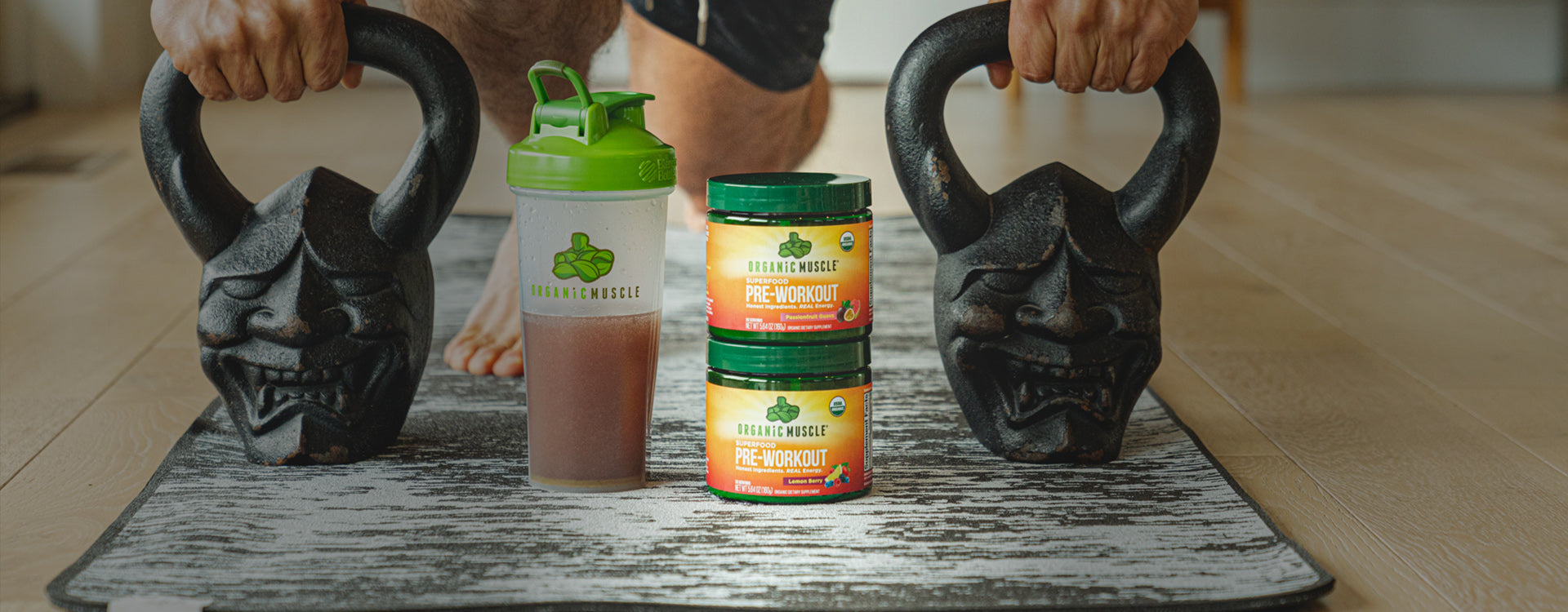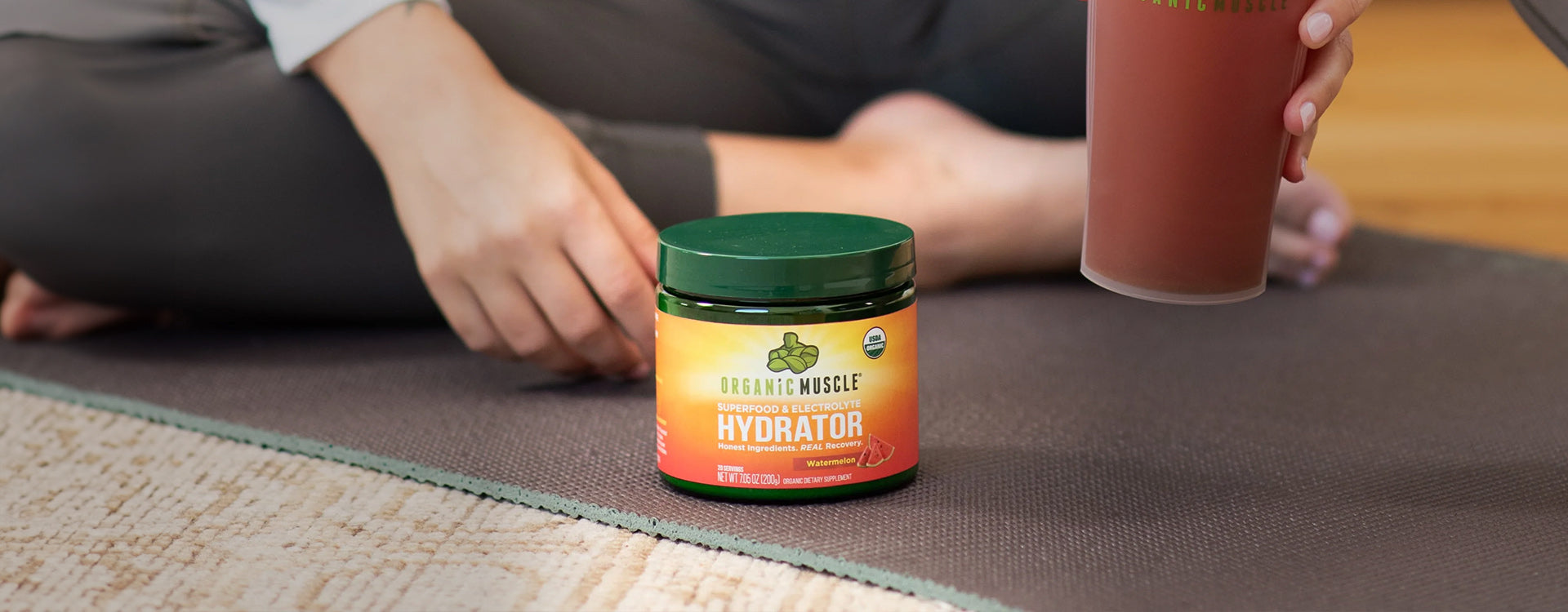Key Takeaways:
- Workouts To Aim For: Specific leg workouts can significantly boost running endurance, power, and speed.
- Importance Of Nutrition: Proper nutrition and hydration are essential for optimizing workout benefits and recovery.
- Mistakes To Avoid: Avoiding common mistakes and maintaining correct form is crucial for maximizing workout efficacy and preventing injuries.
Have you ever hit a wall during a long run, feeling your legs weaken before your mind is ready to quit? For runners, endurance is everything. But without strong, well-conditioned legs, even the most determined runner will struggle to push through those last miles.
Think of your legs as the foundation of a skyscraper—without a solid base, the entire structure risks collapsing. To build endurance and stay strong in every stride, focusing on leg-specific workouts is key to enhancing your overall running performance.
In this article, we'll dive into the top 10 leg workouts that will help you boost your endurance and take your running to the next level. Whether you're a seasoned marathoner or just starting your running journey, these exercises are designed to target your leg muscles and help you run stronger, longer, and faster.
How Leg Workouts Enhance Running Performance
Incorporating targeted leg workouts into one's routine is a pivotal strategy in the quest for improved endurance and running performance. These exercises amplify the strength and stamina of the muscles utilized during running and reinforce the stabilizing muscles that support the body's overall biomechanics. The synergistic effect of stronger muscles and enhanced stability translates into significant gains in running efficiency and endurance.
Increased Muscle Power
Leg workouts for runners are meticulously designed to increase the power in the quadriceps, hamstrings, calves, and glutes. This boost in muscle power is crucial for propelling the body forward more effectively with each stride, enhancing speed and extending the distance one can cover without fatigue. By focusing on the primary and accessory muscles involved in running, athletes can unlock higher performance prowess.
Improved Running Economy
Running economy refers to the energy demand for a given velocity of submaximal running, and it's a vital factor in endurance performance. Strength training, including leg workouts, has been shown to improve running economy by optimizing neuromuscular coordination and increasing the stiffness of the tendons. This results in a more efficient energy transfer and utilization, allowing runners to maintain their pace for longer durations with less perceived effort.
Enhanced Injury Prevention
Incorporating leg workouts into a running training program is not just about performance – it's also about prevention. By strengthening the muscles and joints, runners can significantly reduce their risk of common running-related injuries. Stronger muscles provide better support to the joints, decreasing the impact on the knees, ankles, and hips during running. Moreover, balanced strength in the legs can correct biomechanical imbalances, a common cause of overuse injuries among runners.
Optimized Recovery
Finally, leg workouts contribute to faster and more effective recovery processes. Strength training increases blood flow to the muscles, which can help flush out waste products and reduce inflammation. Additionally, a well-rounded strength routine can enhance the muscles' resilience to the strain of running, potentially shortening the recovery time needed between runs. This means runners can return to training sooner, with their muscles fully repaired and stronger.
Identifying Common Leg Weaknesses In Runners
Even the most dedicated runners can experience leg weaknesses, often evident through repetitive strain, reduced performance, or increased injury risk. Before delving into the best leg workouts, it's crucial to identify and understand common leg weaknesses that can hinder a runner’s progress. Acknowledging these areas of potential improvement allows for a more targeted and effective workout regimen.
Hamstrings
The hamstrings at the back of the thigh are frequently overlooked in training focused on the front leg muscles. Weak hamstrings relative to the quadriceps can lead to an imbalance, increasing the risk of injuries such as strains and tears.
Hip Flexors
Tight or weak hip flexors, crucial for driving the knee upward during running, can limit stride length and reduce efficiency. This weakness can lead to compensatory movements, putting additional strain on other leg muscles and the lower back.
Calves
The calf muscles play a significant role in the push-off phase of running, contributing to speed and agility. Weak calves may not only reduce performance but also lead to overpronation of the foot, affecting overall running mechanics.
Glutes
Strong gluteal muscles are essential for stability, power, and injury prevention. Weak glutes can lead to a reliance on smaller, less equipped muscles during running, which may increase the risk of knee pain and IT band issues.
Understanding these common weaknesses provides a foundation for addressing them through specific exercises designed to strengthen and balance the leg muscles. By focusing on these areas, runners can enhance their performance, boost endurance, and reduce their likelihood of injury, ultimately achieving a more powerful and efficient stride.
Essential Tips For Proper Form In Leg Workouts
Maintaining the correct form during leg workouts is crucial not only for achieving the maximum benefits from each exercise but also for preventing injuries. Here are essential tips to ensure your leg workouts for runners are performed with proper form:
Keep Your Core Engaged
Always start by engaging your core. This stability at your center helps maintain balance and ensures that the correct muscle groups are targeted during the workout. It also prevents unnecessary strain on your spine and lower back.
Align Your Knees
When performing squats or lunges, pay close attention to your knee alignment. Your knees should be directly over your ankles, not extending past your toes. This alignment helps protect your knee joints from unwanted stress.
Focus on Slow, Controlled Movements
Rushing through your exercises can lead to improper form and reduced effectiveness. Focus on performing each movement slowly and with control, feeling the muscle engagement throughout the exercise. This approach maximizes muscle activation and minimizes the risk of injury.
Breathe Properly
Breathing might seem natural, but correct breathing techniques can enhance your performance. Inhale during the less strenuous phase of the exercise, and exhale during the effort phase. Proper breathing not only helps maintain a steady rhythm but also assists in exerting force when needed.
Pay Attention to Your Foot Position
Your feet are the foundation for most leg workouts. Keep them flat during squats or deadlifts to ensure stability and distribute your weight evenly. For lunges, ensure the front foot is flat, and the back foot is balanced on the toes.
Use a Mirror for Feedback
If possible, perform your workouts in front of a mirror to get immediate visual feedback on your form. This can help you make on-the-spot adjustments to align your body correctly. Watching yourself perform an exercise can also boost your confidence as you see improvements over time.
Listen to Your Body
Lastly, always listen to your body. If a particular movement causes discomfort beyond the normal muscle fatigue, assess and adjust your form or choose an alternative exercise. Recognize the difference between challenging your muscles and pushing them too far.
Top 10 Leg Workouts For Runners To Increase Endurance
Incorporating specific leg workouts into your routine can significantly enhance your running endurance, power, and speed. Here, we delve into the top 10 leg exercises designed specifically for runners aiming to boost their endurance. Each exercise not only strengthens the leg muscles but also supports whole-body fitness, aligning perfectly with a holistic wellness approach.
Squats
Squats are fundamental for strengthening the quadriceps, hamstrings, and glutes — key muscles for running. Regularly performing squats can improve your running efficiency and power.
Lunges
Lunges target the quadriceps, glutes, and hamstrings but also challenge your balance and stability, mimicking the unilateral running movement. This makes them an essential exercise for runners looking to enhance leg strength and coordination.
Deadlifts
Incorporating deadlifts into your workout can significantly increase your hamstring strength, which is crucial for explosive speed and endurance. They also engage your lower back, reinforcing your core stability.
Step-Ups
Step-ups are excellent for building strength asymmetrically, just like running. They target your quadriceps, glutes, and calves while promoting balance and stability.
Calf Raises
Strong calves are vital for runners, absorbing much impact with each step. Calf raises can prevent injuries and improve the spring in your step, contributing to better running performance.
Hip Thrusts
Hip thrusts specifically work on your glutes and hip flexors, critical muscles for running power and stride length. Strengthening these can improve running efficiency and reduce injury risk.
Plyometric Exercises
Including plyometric exercises such as jump squats or box jumps can enhance your leg muscles' explosive power, which is vital for sprinting and hill running.
Leg Press
The leg press machine helps build overall leg strength, focusing on the quadriceps, hamstrings, and glutes. It's a great way to increase leg power without the balance required for squats or lunges.
Side Lunges
Side lunges are important for runners because they work the often-neglected inner and outer thighs, providing stability and strength during lateral movements.
Stability Ball Hamstring Curls
This exercise targets the hamstrings and core, improving stability and strength in the back of the legs. It’s beneficial for preventing common running injuries.
How To Incorporate Leg Workouts Into Your Running Routine
Integrating leg workouts into your running routine is crucial for building endurance, enhancing performance, and reducing injury risk. A balanced approach that respects your body's recovery needs while challenging your muscles is key. Here's how to achieve that:
Schedule Strategic Workouts
Divide your training week into running days, leg workout days, and rest days. To prevent fatigue, avoid intense leg workouts right before a long run. Instead, aim to do strength training on days following shorter, less intense runs, allowing sufficient recovery time before your next run. For example, if you run long distances on Sundays, consider scheduling leg workouts for Tuesdays or Wednesdays. This routine ensures your muscles are not overworked and have time to recover and strengthen.
Incorporate Compound Movements
Focus on exercises that target multiple muscle groups simultaneously. Squats, lunges, deadlifts, and step-ups are not only efficient but also effective for improving overall leg strength and endurance. These movements mimic running mechanics, improving your power and efficiency during runs.
Prioritize Plyometrics
Plyometric exercises, such as jump squats and box jumps, are vital for developing explosive strength and speed. These movements increase muscle power, leading to faster and more efficient running. Incorporate plyometric exercises once or twice weekly, focusing on form and technique to maximize benefits and minimize injury risks.
Address Muscle Imbalances
Running predominantly works for specific muscle groups, potentially leading to imbalances. To support overall leg strength and reduce the likelihood of injuries, incorporate exercises that strengthen the less dominant muscles, such as the glutes and hamstrings. For example, single-leg deadlifts are excellent for targeting these areas, promoting balance and stability.
Stretch and Recover
While not a workout per se, never underestimate the power of recovery and mobility work. Ensure you're dedicating time to stretching, foam rolling, and possibly yoga to enhance flexibility, aid recovery, and indirectly improve your running performance. Remember, recovery is when your muscles build strength, so don't skip downtime.
Listen to Your Body
Lastly, and most importantly, listen to your body. If you're feeling particularly fatigued or sore, it might be a sign to ease back on intensity or take an extra rest day. Overtraining can lead to injuries, setting you back from your goals rather than propelling you forward.
Nutrition Tips To Support Your Leg Workout Regimen
Here are several tips to ensure your diet complements your leg workout regimen:
- Prioritize Protein: Adequate protein intake is key for muscle repair and growth. Incorporate high-quality protein sources in your diet, such as lean meats, fish, and legumes, and for those following a plant-based regimen, a variety of nuts and seeds. For an added boost, consider integrating certified organic, non-GMO, and vegan protein supplements from Organic Muscle into your daily routine to ensure you meet your protein needs without compromising dietary preferences.
- Don’t Neglect Carbohydrates: Carbohydrates are your body's primary energy source, especially crucial for runners. Opt for complex carbs like whole grains, fruits, and vegetables, which provide sustained energy, rather than simple sugars that can lead to energy spikes and crashes.
- Stay Hydrated: Adequate hydration is essential for peak performance and recovery. Ensure you drink enough water throughout the day, especially before and after workouts. Proper hydration helps facilitate nutrient absorption and muscle recovery.
- Incorporate Anti-Inflammatory Foods: Foods rich in anti-inflammatory properties can help reduce muscle soreness and inflammation, leading to quicker recovery. Include foods like berries, salmon, avocados, and leafy greens. Additionally, spices such as turmeric and ginger are known for their anti-inflammatory benefits and can easily be added to your meals.
- Opt for Healthy Fats: Healthy fats are crucial for hormone production and joint health, which is vital for runners. Sources of good fats include avocados, nuts, seeds, and fatty fish like salmon. These fats can also provide a slow and steady energy source for longer runs.
- Supplement Wisely: Certain supplements can offer additional support to runners' leg workouts and overall wellness. Consider certified organic, non-GMO supplements free from chemicals and preservatives. Organic Muscle offers a range of supplements that can enhance your performance by providing the necessary vitamins, minerals, and antioxidants without compromising your health standards.
Tracking Progress: Measuring Improvements In Endurance
As you incorporate the best leg workouts for runners into your routine, tracking your progress is crucial to ensure that your efforts translate into tangible endurance improvements. Keeping an eye on your progress not only motivates you but also provides valuable insights into what works best for your unique physiology, allowing for adjustments to optimize performance.
Setting Benchmarks
Start by establishing clear, measurable goals related to your endurance. This could be a specific distance you aim to run without stopping, a time reduction you wish to achieve in a certain distance, or an increase in the number of high-intensity workouts you can perform each week. These benchmarks serve as your personal bests, offering a standard against which to measure your growth.
Utilizing Technology
In today’s digital age, a plethora of apps and devices are available to runners designed to monitor every aspect of their physical activity. From GPS smartwatches that track distance, pace, and heart rate to apps that plan routes and log your progress over time, leveraging technology can provide you with accurate, real-time data on your endurance levels.
Listening to Your Body
While numbers and technology provide an objective measure of progress, paying attention to how your body feels is equally important. Enhancements in endurance often manifest through lessened fatigue during runs, quicker recovery times, and the ability to maintain a steady pace for longer periods. Acknowledging these subtle changes can give you confidence that your leg workouts for runners are making a difference.
Regular Assessments
Finally, conducting regular fitness assessments can help you quantitatively measure your progress. Every 4 to 6 weeks, revisit your benchmarks to evaluate your performance. Based on the results of these assessments, adjust your training and nutritional intake as needed. This will ensure that you are always moving forward, pushing the limits of your endurance, and achieving your fitness goals.
In essence, measuring improvements in endurance is a multifaceted process that goes beyond just tracking the miles run or the speed achieved. It involves a holistic approach, encompassing technological tools, physiological feedback, nutritional support, and regular reassessment. By incorporating these strategies into your training regime, you’ll be well-equipped to observe and celebrate your growth in endurance over time, further propelling you toward reaching your running aspirations.
Final Thoughts
Incorporating these 10 best leg workouts for runners into your training routine is a surefire way to boost your endurance and enhance your running performance. While running is a phenomenal cardiovascular activity, complementing it with specific strength exercises ensures balanced muscle development, reduces injury risk, and improves overall athleticism. Remember, consistency is key to seeing improvements, so try to integrate these workouts into your regime 2-3 times a week.
At Organic Muscle, we understand the holistic journey of fitness and health enthusiasts. Our certified organic, non-GMO, vegan, gluten-free, keto-friendly, and dairy-free supplements are designed to support your athletic endeavors and complement a well-rounded fitness regimen, including effective leg workouts for runners. Whether you're sprinting towards personal bests or enduring long-distance runs, our supplements are crafted to fuel your success while aligning with the values of safety and efficacy.
Read also:
- The Ultimate Guide To Vegan Diet For Athletes: What You Need To Know
- Vegan Bodybuilder Vs. Meat-Eating Bodybuilder: Key Differences
- How To Build Muscle On A Vegan Diet: Secrets From Top Plant-Based Athletes
Frequently Asked Questions About 10 Best Leg Workouts For Runners To Boost Endurance
What leg workout can I do at home to improve my running endurance?
Several effective leg workouts, including squats, lunges, calf raises, and wall sits, can be done at home to boost running endurance. These exercises don't require any special equipment and can be modified to increase intensity as your strength improves. Combining these exercises into a routine can help enhance your leg strength, flexibility, and overall endurance.
How long should a runner's leg workout be?
Leg workouts for runners can range from 20 to 60 minutes, depending on the individual's fitness level, goals, and the workout's intensity. A focused, high-quality session lasting around 30 minutes can be incredibly practical for building strength and endurance without risking overtraining.
Will leg workouts make me a slower runner due to muscle gain?
No, leg workouts designed for runners focus on improving strength, power, and endurance without necessarily adding bulk. While some muscle gain is natural and beneficial for running economy, the workouts aim to make you a more efficient, faster runner, not to increase muscle size significantly.
How do I prevent injury while doing leg workouts as a runner?
To prevent injury during leg workouts, focus on maintaining proper form, starting with lighter weights or resistance, gradually increasing intensity, and incorporating a warm-up routine before workouts and a cool-down stretch can also reduce the risk of injury. Additionally, listening to your body and not pushing through pain is crucial for safe training.
Should I do leg workouts before or after running?
Doing leg workouts after you've completed your run is generally recommended, especially if your running session is focused on speed or high intensity. Running on fresh legs ensures your form remains optimal, which is crucial for injury prevention. Leg strength training can follow on days dedicated to easier runs or as a separate session to maximize focus and energy on each type of workout.
How soon will I see improvements in my running after starting leg workouts?
Improvements in running performance from leg workouts can be noticed as early as a few weeks into a consistent routine. However, significant and more noticeable changes typically occur after a few months. Consistency and gradually increasing the workout intensity are key to unlocking endurance and strength benefits that enhance running performance.
Sources:
- "Enhancing Athletic Performance: The Science Behind Sport Nutrition." University of Idaho, https://atp.uidaho.edu/blog/enhancing-athletic-performance-the-science-behind-sport-nutrition/.
- Prieto-González, Pablo, and Jaromir Sedlacek. “Effects of Running-Specific Strength Training, Endurance Training, and Concurrent Training on Recreational Endurance Athletes' Performance and Selected Anthropometric Parameters.” International journal of environmental research and public health vol. 19,17 10773. 29 Aug. 2022, doi:10.3390/ijerph191710773
|
Disclaimer: Organic Muscle products are not intended to treat, diagnose, mitigate, prevent, or cure disease. Organic Muscle products should not replace prescribed medications or the variety of foods important to a healthful diet. |













